Anne Menini
ReBotNet: Fast Real-time Video Enhancement
Mar 23, 2023Abstract:Most video restoration networks are slow, have high computational load, and can't be used for real-time video enhancement. In this work, we design an efficient and fast framework to perform real-time video enhancement for practical use-cases like live video calls and video streams. Our proposed method, called Recurrent Bottleneck Mixer Network (ReBotNet), employs a dual-branch framework. The first branch learns spatio-temporal features by tokenizing the input frames along the spatial and temporal dimensions using a ConvNext-based encoder and processing these abstract tokens using a bottleneck mixer. To further improve temporal consistency, the second branch employs a mixer directly on tokens extracted from individual frames. A common decoder then merges the features form the two branches to predict the enhanced frame. In addition, we propose a recurrent training approach where the last frame's prediction is leveraged to efficiently enhance the current frame while improving temporal consistency. To evaluate our method, we curate two new datasets that emulate real-world video call and streaming scenarios, and show extensive results on multiple datasets where ReBotNet outperforms existing approaches with lower computations, reduced memory requirements, and faster inference time.
Adaptive Gradient Balancing for UndersampledMRI Reconstruction and Image-to-Image Translation
Apr 05, 2021
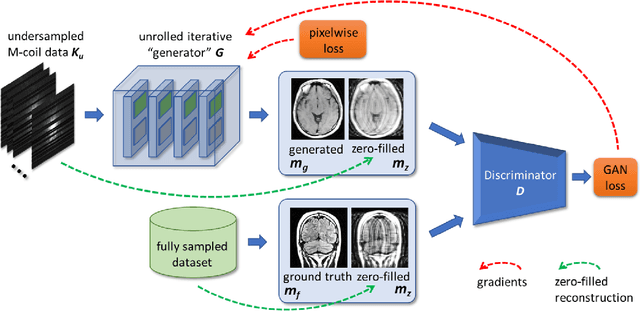

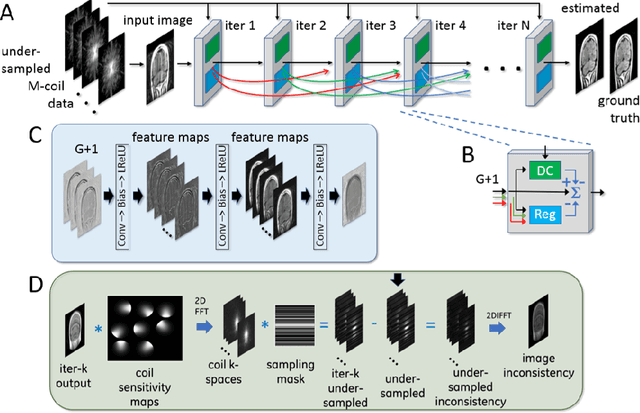
Abstract:Recent accelerated MRI reconstruction models have used Deep Neural Networks (DNNs) to reconstruct relatively high-quality images from highly undersampled k-space data, enabling much faster MRI scanning. However, these techniques sometimes struggle to reconstruct sharp images that preserve fine detail while maintaining a natural appearance. In this work, we enhance the image quality by using a Conditional Wasserstein Generative Adversarial Network combined with a novel Adaptive Gradient Balancing (AGB) technique that automates the process of combining the adversarial and pixel-wise terms and streamlines hyperparameter tuning. In addition, we introduce a Densely Connected Iterative Network, which is an undersampled MRI reconstruction network that utilizes dense connections. In MRI, our method minimizes artifacts, while maintaining a high-quality reconstruction that produces sharper images than other techniques. To demonstrate the general nature of our method, it is further evaluated on a battery of image-to-image translation experiments, demonstrating an ability to recover from sub-optimal weighting in multi-term adversarial training.
Conditional WGANs with Adaptive Gradient Balancing for Sparse MRI Reconstruction
May 02, 2019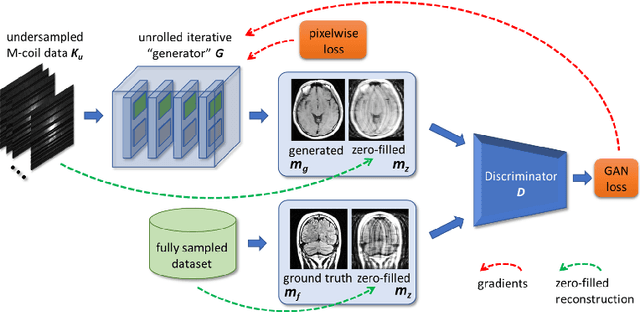

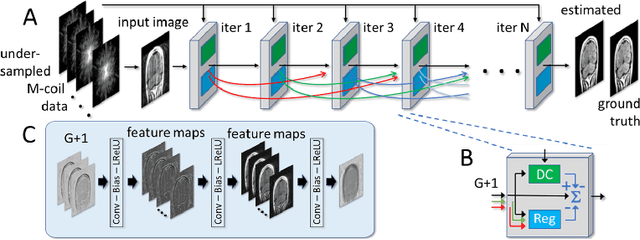
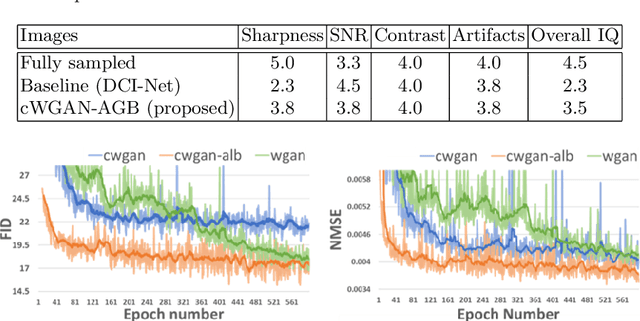
Abstract:Recent sparse MRI reconstruction models have used Deep Neural Networks (DNNs) to reconstruct relatively high-quality images from highly undersampled k-space data, enabling much faster MRI scanning. However, these techniques sometimes struggle to reconstruct sharp images that preserve fine detail while maintaining a natural appearance. In this work, we enhance the image quality by using a Conditional Wasserstein Generative Adversarial Network combined with a novel Adaptive Gradient Balancing technique that stabilizes the training and minimizes the degree of artifacts, while maintaining a high-quality reconstruction that produces sharper images than other techniques.
Motion Estimated-Compensated Reconstruction with Preserved-Features in Free-Breathing Cardiac MRI
Nov 15, 2016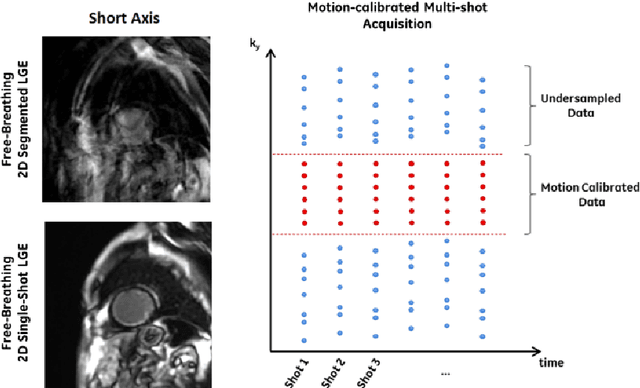

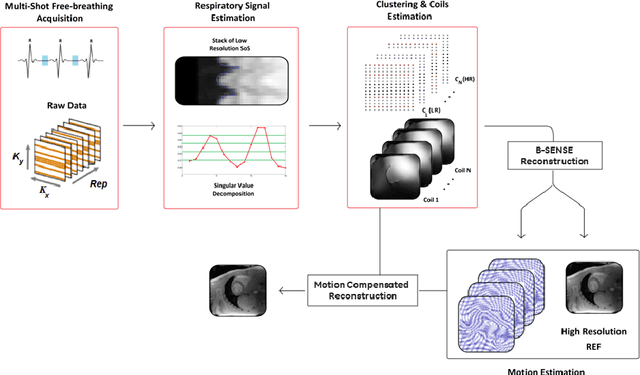
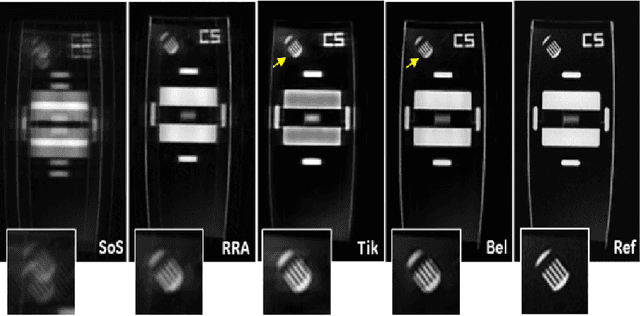
Abstract:To develop an efficient motion-compensated reconstruction technique for free-breathing cardiac magnetic resonance imaging (MRI) that allows high-quality images to be reconstructed from multiple undersampled single-shot acquisitions. The proposed method is a joint image reconstruction and motion correction method consisting of several steps, including a non-rigid motion extraction and a motion-compensated reconstruction. The reconstruction includes a denoising with the Beltrami regularization, which offers an ideal compromise between feature preservation and staircasing reduction. Results were assessed in simulation, phantom and volunteer experiments. The proposed joint image reconstruction and motion correction method exhibits visible quality improvement over previous methods while reconstructing sharper edges. Moreover, when the acceleration factor increases, standard methods show blurry results while the proposed method preserves image quality. The method was applied to free-breathing single-shot cardiac MRI, successfully achieving high image quality and higher spatial resolution than conventional segmented methods, with the potential to offer high-quality delayed enhancement scans in challenging patients.
 Add to Chrome
Add to Chrome Add to Firefox
Add to Firefox Add to Edge
Add to Edge